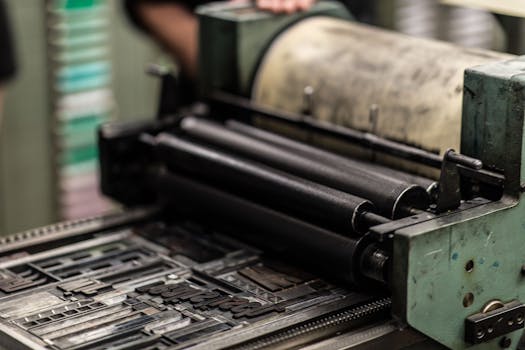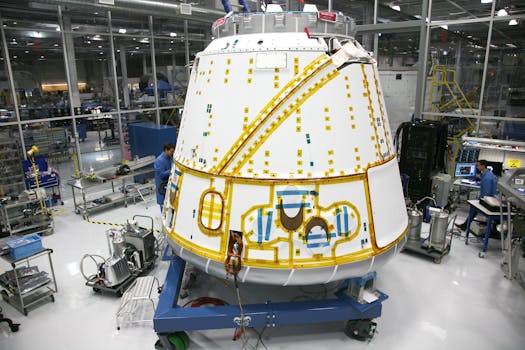Introduction to Precision Swiss Machining
From the timeless precision of Swiss watches to the complexities of modern industrial machinery, Precision Swiss Machining plays a pivotal role in manufacturing. This advanced machining technique, renowned for its high precision and accuracy, has revolutionized the production of intricately designed, miniature parts. Let’s delve into the fascinating world of Swiss machining, understanding its history, process, and the unique design of Swiss machines.
Brief History of Swiss Machining
Swiss machining’s origins can be traced back to Switzerland’s watch-making industry, where there was a need for highly precise, tiny parts. Over time, this ingenious machining process has gained global recognition and is now applied across diverse industries, thanks to its ability to manufacture small parts with very tight tolerances. Today, Swiss machining has evolved to include computer-controlled Swiss CNC machines, further enhancing its precision and versatility.
Understanding the Swiss Machining Process
Swiss machining is a set of manufacturing techniques that utilize specialized tool-cutting machines to convert metal stock into the required part. This process relies on a Swiss machine’s multiple axes, which allows it to perform numerous operations simultaneously, increasing efficiency and precision.
The Swiss machining process starts with the operator feeding the bar stock through the guide bushing, mounted with cutting tools. This unique setup provides robust support for the workpiece, regardless of its length, and minimizes tool action on the part, thereby enhancing precision.
The Unique Design of Swiss Machines
Swiss machines, also known as Swiss screw machines or Swiss lathes, are distinguished by their unique design. Unlike conventional CNC machines, Swiss machines can turn and move to and fro along the Z-axis. This design feature aids in both the efficiency and precision of the machining process. Moreover, the proximity of the cutting tool to the guide bushing prevents any form of deflection, ensuring that the machine remains within the desired tolerances, regardless of the workpiece’s length.
In conclusion, the world of Precision Swiss Machining is a fascinating blend of history, innovation, and technology. As we move forward, it will continue to play a crucial role in manufacturing industries, delivering high-quality, precise parts for a variety of applications.

The Superiority of Precision Swiss Machining
In the realm of advanced manufacturing, Precision Swiss Machining holds an esteemed position, known for its unmatched precision, efficiency, and versatility. Distinguishing itself from traditional and CNC machining, Swiss machining has carved out a niche for itself, delivering top-tier quality components for industrial applications.
Precision Swiss Machining vs Traditional Machining
When it comes to manufacturing parts with exacting standards, Swiss machining stands head and shoulders above conventional techniques. Traditional machining, while adequate for regular parts, relies heavily on the operator’s skill and steadiness. On the other hand, Swiss machines deliver high precision consistently, independent of the operator’s influence, making them a superior choice for industries that cannot afford inaccuracies.
Moreover, Swiss machines are designed to handle complex part designs efficiently, thanks to their multiple axes. This allows simultaneous operations on a single part, which traditional lathes struggle to match. Hence, when it comes to accuracy, efficiency, and handling complex designs, Swiss machining outperforms traditional machining.
Precision Swiss Machining vs CNC Machining
CNC machining, like Swiss machining, is a highly automated, computer-controlled process. However, the benefits of Swiss machining extend beyond those of traditional CNC. Swiss lathes, equipped with anywhere from 7 to 13 axes, can perform numerous operations in a single machining cycle, including drilling, Swiss milling, thread cutting, and more. In contrast, conventional CNC lathes typically have just 3 to 5 axes, limiting their productivity.
Another distinguishing feature is the coolant type used in Swiss machining. Unlike CNC machining, which often uses water-based coolants, Swiss machines typically require oil, which has a lower heat capacity. This means Swiss machining more effectively transfers heat away from the cutting edge, resulting in better tolerances and faster cooling.
In terms of how they handle the workpiece, Swiss machines prevent deflection by operating the cutting tool close to the guide bushing, allowing for greater precision. In CNC machining, the workpiece is affixed at the collet of the main spindle, making it less suitable for longer workpieces.
The High Accuracy of Swiss Lathes
Swiss lathes are renowned for their exceptional accuracy. They are designed to maintain their precision over time, unaffected by the tool force, making them ideal for manufacturing complex-shaped parts with tight tolerances. Their original application—making small, intricate parts like electronic components and watch parts—is a testament to their precision capabilities.
Swiss lathes can achieve tolerances within ±0.0001 inches, a feat unmatched by most other machining methods. Coupled with their ability to run unattended for extended periods, Swiss machines deliver high-volume production without compromising on quality. This makes them a go-to choice for industries requiring top-tier precision like aerospace, medical, and electronics.
In conclusion, the superiority of Precision Swiss Machining lies in its high precision, efficiency, versatility, and ability to handle complex designs. As industries strive for efficiency and accuracy, Swiss machining continues to provide the solution, pushing the boundaries of what’s possible in the manufacturing sector.

The Advantages of Precision Swiss Machining
The world of manufacturing has seen a significant transformation with the advent of precision Swiss machining. It’s not just about the high degree of precision and accuracy that Swiss machining brings to the table, but also the plethora of other advantages that make it a game-changer in the industry. Let’s delve deeper into the benefits of Swiss machining.
Increased Productivity and Cost Savings
One of the key advantages of Swiss machining is its ability to bolster productivity. Swiss machines feature multiple axes, allowing for simultaneous operations. This means that even complex part designs can be efficiently machined without having to pause or switch between different operations. The result is a significant reduction in cycle time and a boost in productivity levels.
Moreover, Swiss machining is known for its high-damping composite casting (HDCC) and onboard automatic setting probe. These features expedite the setup time, thereby saving operational costs. Additionally, the reduction in material waste due to the high precision of Swiss machining also contributes to overall cost savings.
Versatility in Machining Small, Complex Parts
Swiss machining really shines when it comes to machining small, intricate parts. Originally designed to manufacture watch parts, the technology behind Swiss machining has evolved to handle a wide array of small parts across various industries. Whether it’s the intricate components of electronic devices or the tiny yet critical parts of medical devices, Swiss machining delivers with precision and consistency.
What’s more, the advanced technology incorporated in Swiss machining reduces the need for human intervention, leading to fewer errors and improved product design.
Reduced Deflection in Long, Slender Parts
Another distinctive advantage of Swiss machining is its ability to effectively machine long, slender parts. Traditional machining techniques often struggle with these types of parts due to deflection issues. However, Swiss machining utilizes a guide bushing system that ensures the cutting tool operates close to the guide bushing, effectively preventing deflection.
This feature allows Swiss machining to maintain strict tolerances irrespective of the length of the workpiece, making it an ideal choice for producing long, slender parts with high precision.
In conclusion, the advantages of precision Swiss machining – increased productivity, versatility in machining small, complex parts, and reduced deflection in long, slender parts – render it an indispensable process in today’s manufacturing landscape. As industries continue to demand high-quality, precise components, Swiss machining stands as a robust solution, delivering top-tier quality parts with impressive efficiency and accuracy. The availability and reliability of precision machining services like those offered by TMC Technologies can indeed make a significant difference in meeting these growing industrial demands.

Applications of Precision Swiss Machining
Swiss precision machining has been a game-changer in many industries, proving itself as an invaluable tool in producing intricate, high-quality parts. This advanced machining process has gained traction in sectors ranging from aerospace to medical and defense, thanks to its exceptional ability to create parts with tight tolerances and complex geometries.
Use in Various Industries: Aerospace, Medical, Defense, and More
The aerospace industry often relies on Swiss machining for the production of intricate parts like motors, wings, wheels, and cockpit controls. The high precision and tight tolerance achievable with Swiss machines are essential in this industry, where even the slightest flaw can have catastrophic consequences.
In the defense industry, Swiss machines are employed in the production of complex parts used in helicopters, missiles, ships, and tanks. The high accuracy of Swiss machining makes it suitable for this sector, where precision is paramount.
The medical industry also benefits from Swiss machining, with common medical Swiss machined parts including hinges, anchors, electrodes, and pull rings used in medical devices. Swiss machines’ ability to produce parts with single-digit micron range tolerance is essential in ensuring the safety and efficacy of medical devices.
Material Compatibility: From Common Steel to Exotic Alloys
Swiss machined parts can be made from a wide range of materials, including common ones like carbon steel, stainless steel, and aluminum to more exotic materials like titanium, thermoplastic, brass, bronze, and nickel. This material versatility makes Swiss machining an ideal choice for various applications, regardless of the industry.
Case Study: TMC Technologies’ High-Quality CNC Lathe Parts
TMC Technologies is an example of a company that has effectively leveraged the benefits of precision Swiss machining. With years of experience in various sectors, including the aerospace, medical, and automotive industries, TMC Technologies has been able to produce high-quality CNC machined parts that meet the highest standards of precision and quality. This has positioned them as a trusted partner for many firms in need of top-tier components for their industrial machinery.
In conclusion, the versatility and precision of Swiss machining have made it a preferred choice for many industries. With the ability to handle a diverse range of materials and produce complex parts with high accuracy, Swiss machining is indeed an advanced technique that delivers unparalleled results.

Advanced Techniques for Precision Swiss Machining
Diving deep into the world of precision Swiss machining, it’s clear that this advanced technique has its unique strategies for achieving unmatched precision. From the importance of accurate model drawing to the role of guide bushing and segmental machining, let’s delve into the intricate world of Swiss CNC machining.
Tips for Swiss CNC Machining: Accurate Model Drawing, Standard-Sized Holes, and More
When it comes to Swiss CNC machining, a few key strategies can significantly enhance accuracy and efficiency. First and foremost, the model drawing must be accurate, clear, and precise. This allows the CNC operator to fully understand the part being machined, thereby improving the part’s dimensions, tolerances, and surface finish.
Another critical tip is to use standard-sized holes. Although Swiss machining can handle small and deep holes, using standard-sized holes can reduce the difficulty and cost of machining. Furthermore, avoiding sharp corners in your design can prevent issues associated with round drill bits and can reduce chatter and premature tool wear.
Last but not least, it’s essential to be mindful of the tolerances and wall thickness. Assigning strict tolerances only where necessary can save machining time and cost, while ensuring a suitable wall thickness can prevent defects that may reduce the part’s surface quality and accuracy.
The Role of Guide Bushing in Swiss Machining
One of the unique features of Swiss machining is the use of a guide bushing. This element ensures that the cutting tool operates close to the guide bushing, thereby preventing any form of deflection. This enables Swiss machines to maintain the desired tolerances, even when working with longer workpieces, something that traditional CNC machining struggles with.
Segmental Machining and Coolant Type in Swiss Machining
Swiss machines also use segmental machining. This technique ensures that the resultant dimensions fall within the desired tolerances by producing parts in segments. Another distinctive feature of Swiss machining is its choice of coolant type. Swiss machines often use oil, which has a lower heat capacity than water, for better heat transfer away from the cutting edge. This further enhances the precision of Swiss machining.
In conclusion, these advanced techniques make Swiss machining a versatile and precise manufacturing option. The combination of accurate model drawing, the use of guide bushing, segmental machining, and the right coolant choice all contribute to the high precision and efficiency that define Swiss machining. With these techniques in place, manufacturers can confidently rely on Swiss machining for their complex and precision-critical parts.

Conclusion: The Future of Precision Swiss Machining
As we advance into the future, precision Swiss machining continues to hold a pivotal position in the parts manufacturing industry. The demand for high-quality, intricate, and precision-engineered parts is rapidly growing, pushing the boundaries of what Swiss machining can achieve.
The Growing Demand for Precision Swiss Machined Parts
From the automotive industry to the medical field, precision Swiss machined components are powering the technologies of the future. These components are fundamental in ensuring the accuracy, performance, and longevity of numerous applications. As industries continue to innovate and scale, the demand for precision Swiss machined components is set to rise further. This surge is fueled by the need for components with intricate features, tight tolerances, and high-quality finishes – all hallmarks of precision Swiss machined parts.
How TMC Technologies is Meeting this Demand with Top-Tier Quality CNC Components
To meet this burgeoning demand, TMC Technologies, with over 30 years of experience in precision machining services, brings a wealth of knowledge, skills, and expertise. Our state-of-the-art automated tools and technologies, coupled with our dedication to quality and efficiency, set us apart in the industry. We are committed to providing top-notch precision machining services, ensuring high-quality workmanship, and delivering on time. Our ability to work with a variety of materials, from aluminum alloys and brass to titanium, stainless steel, and plastics, gives us the flexibility to cater to diverse industry needs.
Moreover, our rigorous quality control checks throughout the production process ensure that every component we produce meets the highest standards of quality. We are not just meeting the growing demand but doing so without compromising on the quality that our clients have come to expect from us.
The Importance of Tool Design and Fabrication for Custom Applications in Swiss Machining
In the realm of Swiss machining, the design and fabrication of the tools used play a vital role in ensuring the accuracy and longevity of the machined parts. At TMC Technologies, we understand the importance of these elements and are continually investing in research and development to push the boundaries of tool design and fabrication. This allows us to provide custom solutions for our clients, catered to their specific needs and applications.
In conclusion, as the future of precision Swiss machining unravels, TMC Technologies is poised to deliver. Our unwavering commitment to quality, innovation, and customer satisfaction will continue to drive our tradition of excellence as we meet the growing demand for precision Swiss machined components.